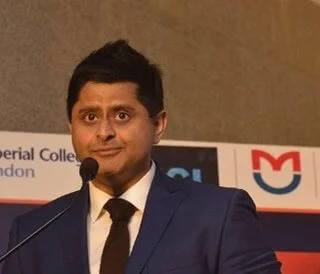Sialorrhea Clinic at King’s – Treatment for Excessive Drooling / Excessive Salivation
Sialorrhea is excessive drooling or excessive salivation/hyper-salivation that occurs as a result of neuromuscular dysfunction, motor dysfunction or sensory dysfunction. It is a condition that mostly affects neurologically impaired children (those with cerebral palsy or mental retardation) and adults who have Parkinson’s disease or have had a stroke.
There are two primary ways that sialorrhea manifests in patients, and they are:
- Anterior sialorrhea: This occurs when patients have excessive forward or anterior spillage of saliva from their mouths on to their faces and clothing. Anterior sialorrhea is commonly known as drooling and causes difficulty with skin care, cleanliness, and socialization.
- Posterior sialorrhea: This is when patients rather than swallow saliva normally they have excessive posterior spillage of the saliva from their mouth down their tracheas or airways. This results in chronic lung irritation known as aspiration and can progress to pneumonia.
Most patients often have a mixture of both types of sialorrhea.
The most common cause of sialorrhea is poor oral or facial muscle control. The lack of oral control results in the inability to swallow saliva normally or inattention to the need to swallow saliva.
Causes of sialorrhea include:
- Parkinson’s Disease
- Congenital abnormalities or brain development
- Traumatic brain injury
- Brain abnormalities such as cerebral palsy
- Stroke
Other causes of excessive saliva production that can lead to hypersalivation include:
- Sinus, throat, or peritonsillar infection
- Nausea or morning sickness during pregnancy
- False teeth
- Inflammation, ulcers, or pain in the mouth
- Reptile venom, poisonous spider bites, and poisonous mushrooms
- Poor oral hygiene
- Severe infections such as tuberculosis or rabies
- Jaw dislocation or fractures
Sialorrhea causes a range of psychosocial and physical complications such as dehydration, perioral chapping, odor, and social stigmatization. This can be devastating to both the patients and their families.
A number of patients of Parkinson’s disease tend to experience sialorrhea. It can cause such patients to have social embarrassment and aspiration pneumonia. However, sialorrhea in Parkinson’s disease is thought to be caused by infrequent or impaired saliva swallowing, rather than hypersecretion.
Symptoms of Sialorrhea
It is easy to identify the symptoms of anterior sialorrhea as the drooling is often quite visible. The excessive drooling is usually accompanied by chronic wet clothing. The drooling can sometimes be worse at night with bed wetting in the morning especially in children.
The symptoms of posterior sialorrhea are more difficult to be seen but they include visible chocking and coughing, or the patient being prone to repeated episodes of aspiration pneumonia.
Other symptoms of hypersalivation include:
- Chapped lips
- Skin infection around the mouth
- Damage or softening to the skin around the mouth
- Dehydration
- Bad breath
- Speech disturbance
- Poor sense of taste
Diagnosis of Sialorrhea
Diagnosing hypersalivation helps in pin-pointing the underlying cause of the condition.
Anterior sialorrhea is easily diagnosed by those close to the patient such as family or care givers through observation of the excessive drooling.
Posterior sialorrhea can be suggested by the history of repeated pneumonia and chocking.
Additional tests that may be done include swallowing evaluations done jointly by radiologists and speech pathologists. An x-ray imaging may be done during the act of swallowing.
The doctor will also examine the following:
- Mouth, teeth, and surrounding skin
- Tonsils and nasal airways
- Alertness and emotional state
- Hunger, hydration, and head posture
Existing medical conditions and ongoing medication as well as how and when the hypersalivation occurs will be considered during the diagnosing.
Treatment of Sialorrhea
Treatment for sialorrhea is best done by a clinical team comprising of primary healthcare providers, dentists, occupational therapists, speech pathologists, neurologists, orthodontists, and otolaryngologists.
Treatment options include:
- Therapy: This can involve speech therapy and behavioral modification.
- Medication: This includes oral medication to help reduce saliva production.
- Chemodenervation: periodic injection therapy to temporarily reduce saliva production.
- Surgery: This includes salivary gland excision, duct rerouting, and salivary duct ligation.
احجز موعدًا


